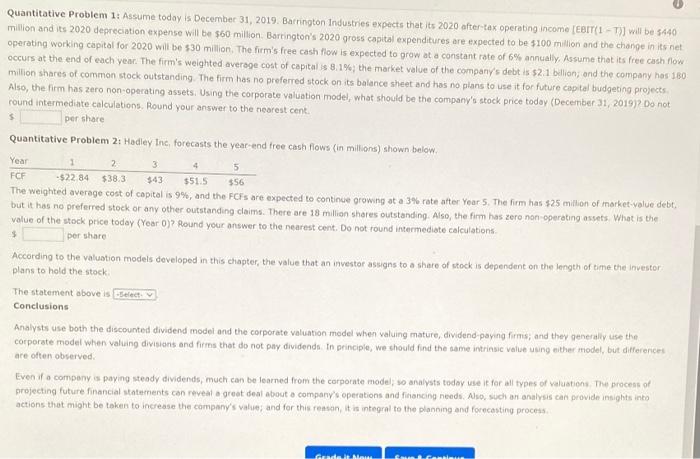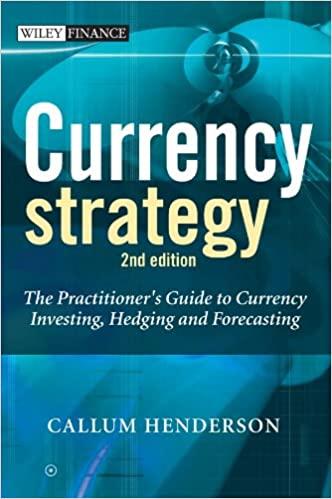Answered step by step
Verified Expert Solution
Question
1 Approved Answer
help needed with both questions please and thanks Quantitative Problem 1: Assume today is December 31, 2019. Barrington Industries expects that its 2020 after-tax operating
help needed with both questions please and thanks 
Quantitative Problem 1: Assume today is December 31, 2019. Barrington Industries expects that its 2020 after-tax operating income [E8IT(1 - TJ] will be sA40] million and its 2020 depreciation expense will be $60 million. Bartington's 2020 gross capital expenditures are expected to be 7100 million and the change in its net operating working capital for 2020 will be $30 million. The firm's free cash flow is expected to graw at a constant rate of 6% annually. Assume thet its free cash flow occurs at the end of each year. The firm's weighted averege cost of capitai is 8.1%; the market value of the company's debt is $2.1 bellion; and the company has 180 . milion shares of common stock outstanding. The firm has no preferred stock on its balance stieet and has no plans to use it for future cap tal budgeting projects. Also, the firm has zero non-operating assetsi Using the corporate valuation model, what should be the company's stock. price todoy (Decenber. J1, 2019)? Do not round intermediate calculations. Round your answer to the neorest cent. 5 per share Quantitative Problem 2: Hadley Inc, forecasts the year-end free cash fows (in millans) shown below. Ine weignted average cost of copital is 9%, and the FCFs are expected to continue growng at a 3% rate after Year 5 . The firm has $25 million of market-yalue debt, but it has no preferred stock or any other outstanding claims. There are 18 million shares outstanding. Also, the firm has zero non-operating assets. What is the value of the stock price today (Year 0)? Round your answer to the nearest cent. Do not round intermediate calculations. per share According to the valuation models developed in this chapter, the value that an investor assigns to a share of stock is dependent on the length of time the investor plans to hold the stock. The statement above is Conclusions Analysts use both the discourted dividend model and the corporate valuation model when valuing mature, dividend-paying firms; and they generaliv use the corporate model when valieing divisiders and firfns that do not pay dividends. In principle, we chould find the same intrinsic value using either model, but differences are often observed. Even if a compeny is paying steady dividends, much can be learned from the corporate model; so analysts todoy use if for all types of veluations. The procens of grojecting future financial statements con reveal a greet deal about o company's operations and fitioncing needs, Also, such an analysis can provide insights into actions thet might be taken to increase the campany's valie; and for this reasan, it is integral to the planning and forecesting process 
Step by Step Solution
There are 3 Steps involved in it
Step: 1

Get Instant Access to Expert-Tailored Solutions
See step-by-step solutions with expert insights and AI powered tools for academic success
Step: 2

Step: 3

Ace Your Homework with AI
Get the answers you need in no time with our AI-driven, step-by-step assistance
Get Started


